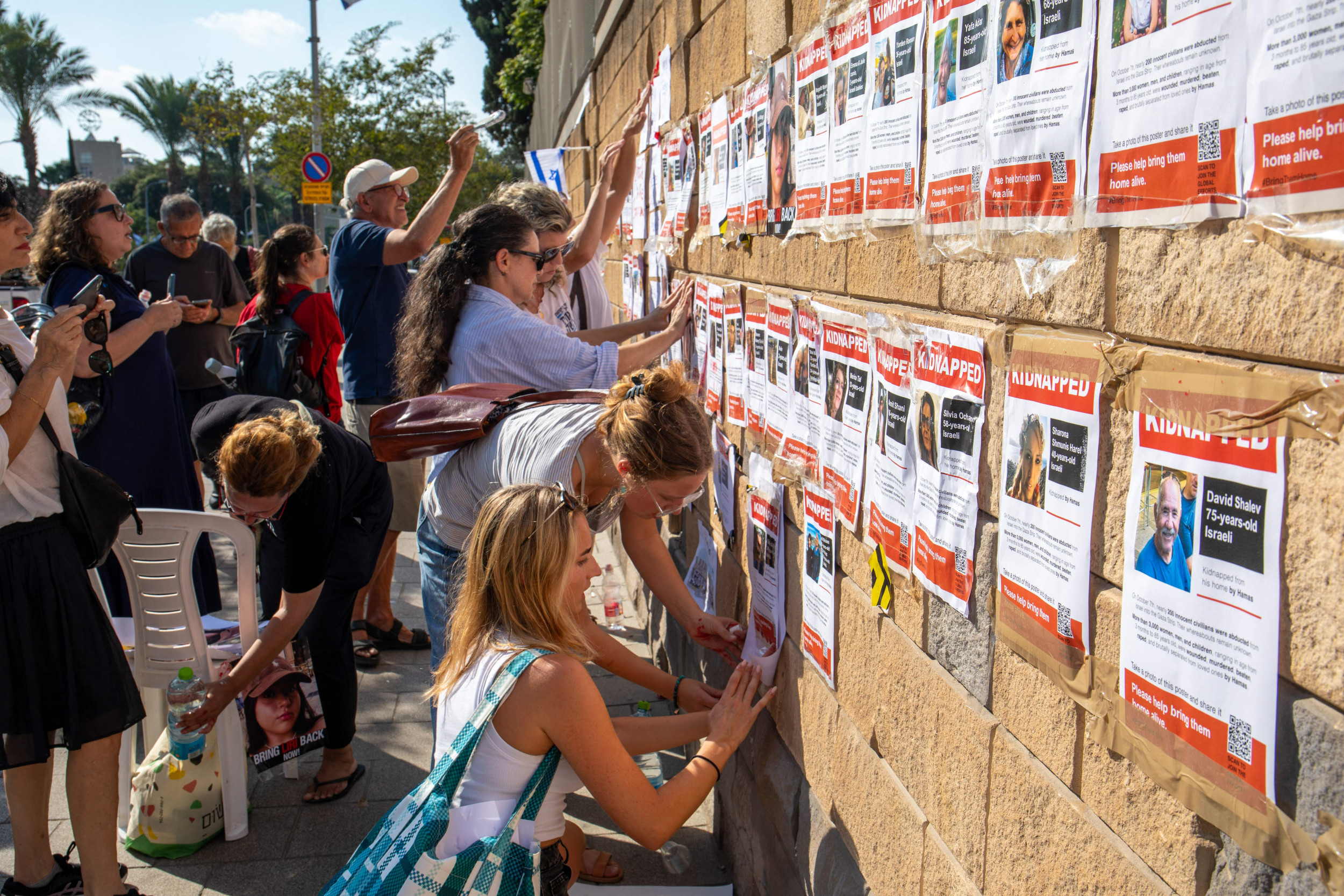The Israeli special forces unit Sayeret Matkal is on standby to try to rescue nearly 200 hostages taken by Hamas militants, it has been reported.
That division and the Yamam special forces of Israel’s national police will be involved in the difficult operation to free Israeli and foreign nationals being held in locations across Gaza that are being defended by Hamas fighters, U.K. newspaper The Telegraph said.
U.S. Defense Secretary Lloyd Austin has also said the U.S. has “people on the ground” who will assist Israeli authorities “with intelligence and planning” for potential hostage rescue efforts. Meanwhile, advisers from the U.S. intelligence community will assist an American special operations team assigned to the U.S. embassy in Israel, according to The Messenger.
But key to any rescue will be the special reconnaissance division that is considered one of the premier special force units of Israel.
The History of Sayeret Matkal
Sayeret Matkal specializes in hostage rescue and reconnaissance missions and it can count Israeli Prime Minister Benjamin Netanyahu among its veterans. Founded in 1957, the group has taken part in every major conflict involving Israel, although its existence was only officially acknowledged in the 1980s.
Netanyahu was involved in one of the unit’s early hostage rescues, codenamed Operation Isotope. A commercial airliner had been hijacked by four members of the Black September Organization, a Palestinian group, who were threatening to kill the passengers onboard if Palestinian prisoners were not released by Israel.
On May 9, 1972, Sayeret Matkal soldiers led by Ehud Barak, another future Israeli prime minister, stormed the aircraft at Tel Aviv Airport. Within minutes, they had killed the two male hijackers, captured the two female hijackers, and freed all 90 hostages, although one later died of wounds sustained during the rescue. Netanyahu himself was shot in the arm.
The unit is perhaps best known for its role in the 1976 Entebbe airport raid in Uganda, when its commandos saved 102 hostages from Palestinian hijackers in Operation Thunderbolt on July 4. Netanyahu’s older brother, Yonatan Netanyahu, who commanded the unit during the raid, was killed in the operation. In an intense assault lasting around 30 minutes, all seven hijackers were killed, as well as dozens of Ugandan soldiers. The Israeli commandoes also destroyed several Ugandan fighter jets on the ground to prevent them from pursuing.
Of the 106 hostages, three were killed, and one was left in Uganda. Five Israeli soldiers and ten hostages were wounded, in addition to the death of Yonatan Netanyahu.
In a 2012 interview with Newsweek, Benjamin Netanyahu was clear about the effect the operation, and Yonatan’s loss, had had on him.
“My brother’s death changed my life and directed it to its present course,” he said. Regarding its ideological impact, Netanyahu added: “It didn’t shape my worldview. It reaffirmed it.”
The unit has also suffered major setbacks, such as the Ma’alot Massacre in 1974, when an attempt to rescue hostages in an elementary school saw 22 children killed by Palestinian militants. In response, Israel created the Yamam special forces unit and ordered Sayeret Matkal to focus on overseas hostage situations.
Who Dares Wins
Sayeret Matkal is modeled on the British army’s Special Air Service (SAS), taking its motto, “Who Dares Wins.” Like the U.K. unit, it makes recruits undertake a grueling selection process that includes paratrooper training, instruction in light weapons, hostage rescue tactics and surviving behind enemy lines. This process is thought to last 20 months. While the process is highly secretive, military analysts have suggested it is broken down into the following sequence:
Four months of infantry training.Two months of advanced infantry training.A three-week parachutist course.A five-week counterterrorism course.
Recruits also go through a two-week period of simulated captivity where they are mistreated and interrogated, according to The Times of Israel.
The unit has pioneered the use of various weapons and tactics, such as employing the Uzi sub-machinegun on operations.
With the current crisis in Gaza unfolding, Israeli special forces expert Aaron Cohen told Fox News that the mission to get the hostages from Gaza would be “extremely dangerous” and would be conducted “via the smokescreen which will be connected to the major offensive Israel is preparing for right now.”
Hamas has already threatened to begin executing its prisoners in response to Israeli strikes on Gaza that were not preceded by a warning, and a rescue mission runs the risk of the hostages being killed by their captors.
There are also reports that the captives are being used as human shields across the enclave that Hamas controls and that they are located in tunnels, apartment buildings and probably at military sites.
On Monday, the Israeli Defense Forces (IDF) said there were 199 hostages, including children, women, the elderly and the disabled. Many are Israelis, but there are dual nationals, so other governments, including the U.S., France and the U.K. have a stake in their safe release.
Avner Avraham, a former Mossad officer, told The Telegraph that with such a large number of hostages, “it’s not easy to hide them.” He said that Israel may have information regarding their whereabouts, but it will be “very difficult” to secure their release, and the operation “will take time and we will lose people, unfortunately.”
Update, 10/16/23, 8 a.m. ET: This article was updated with additional background information and a new image.

